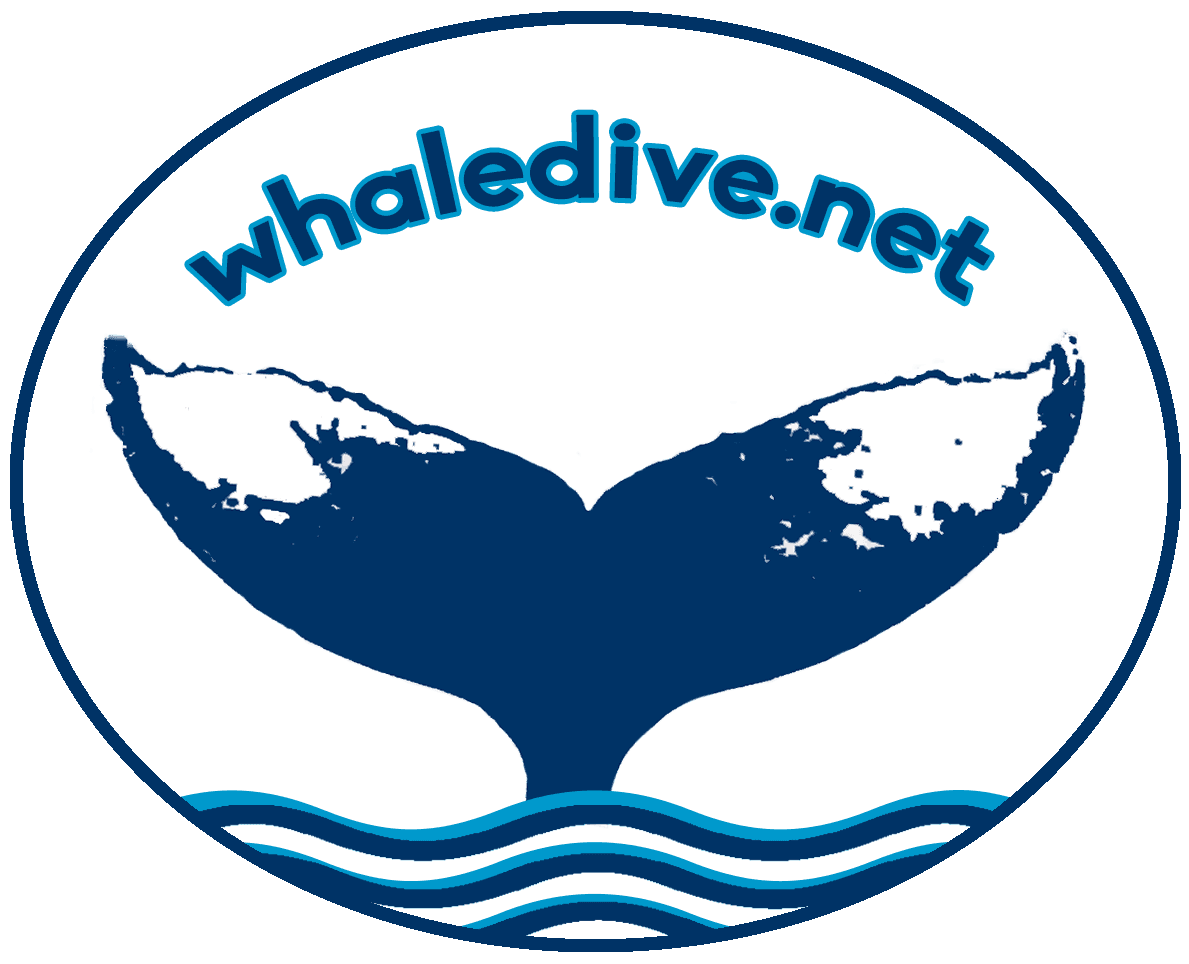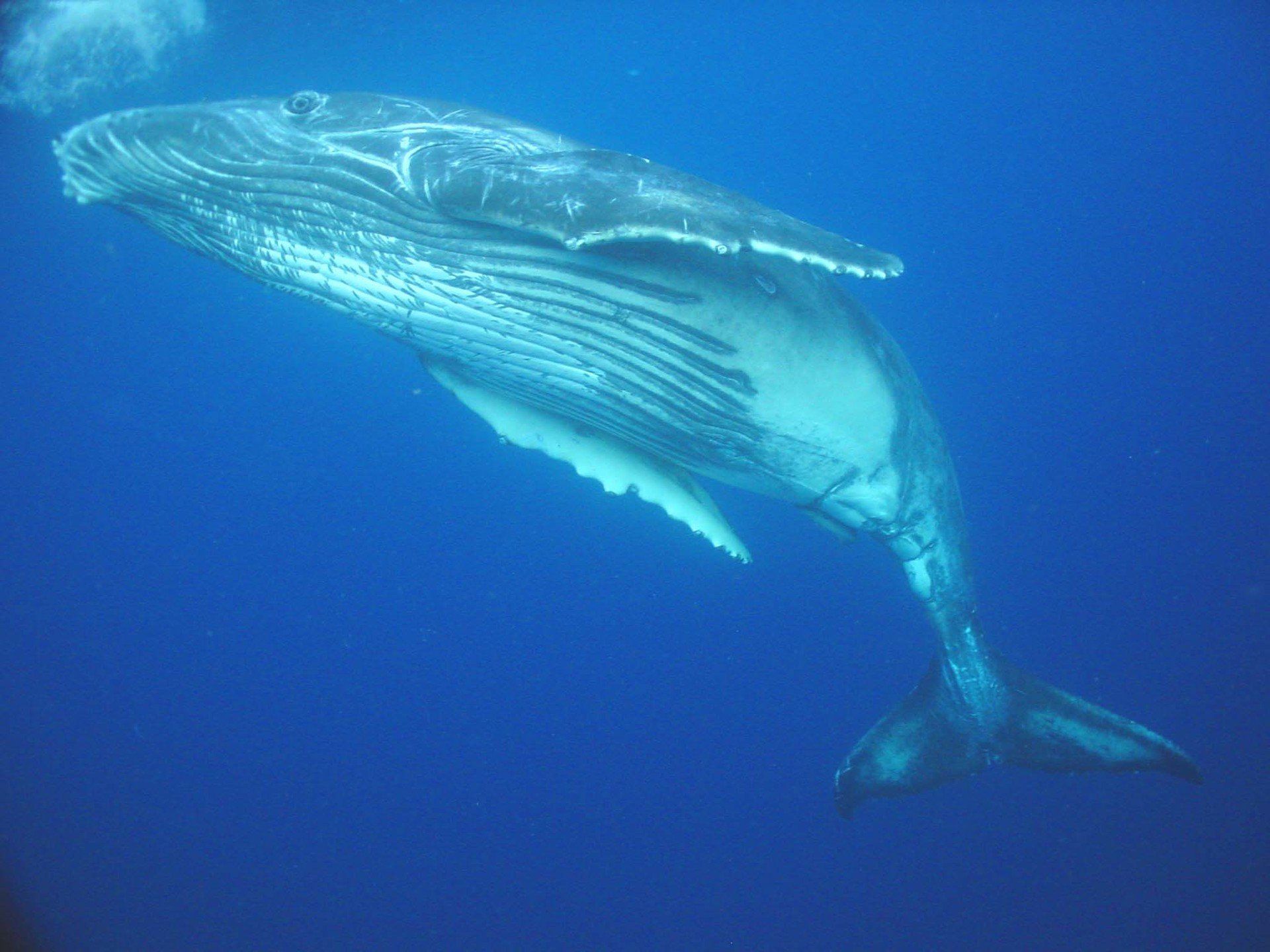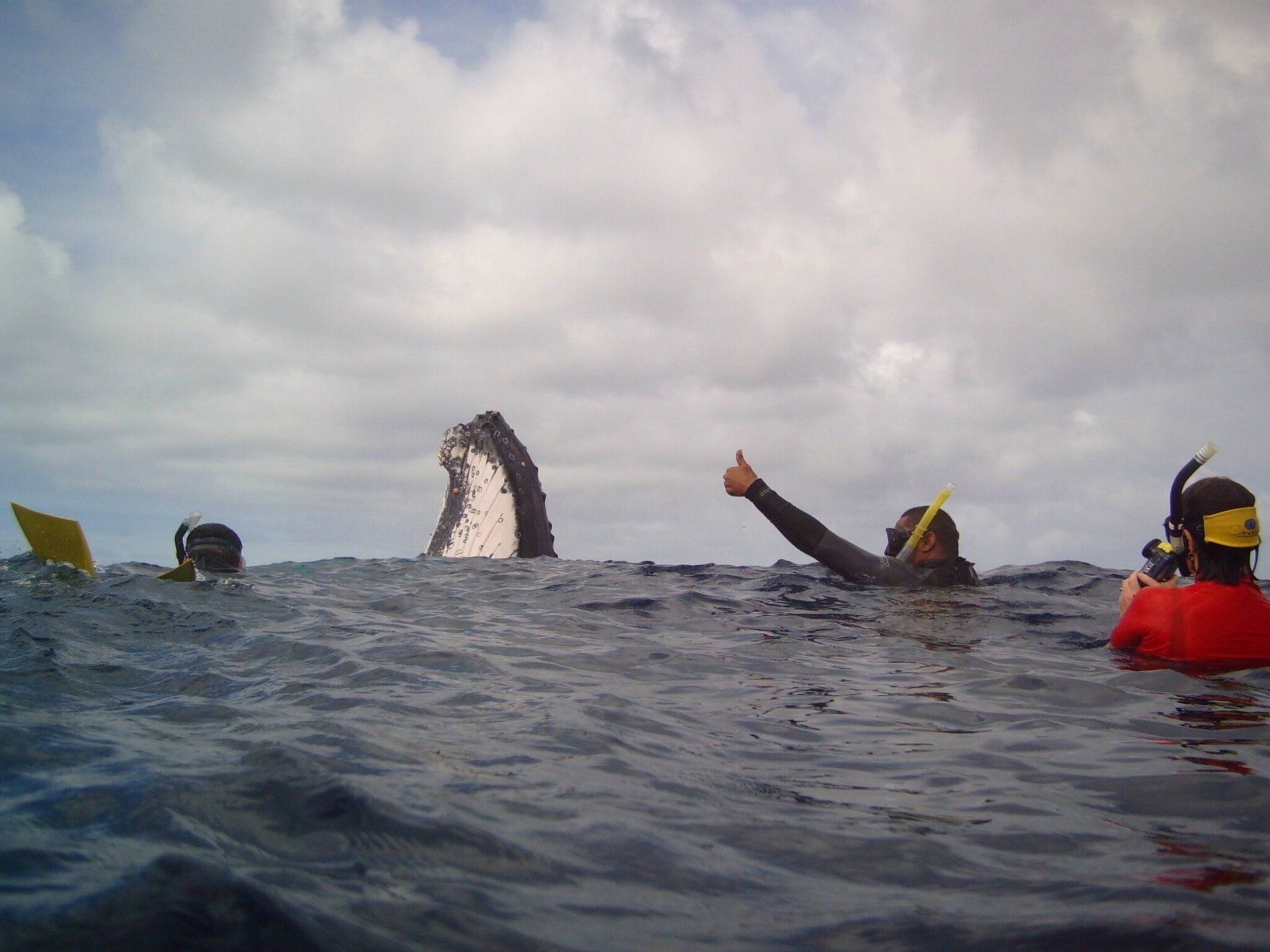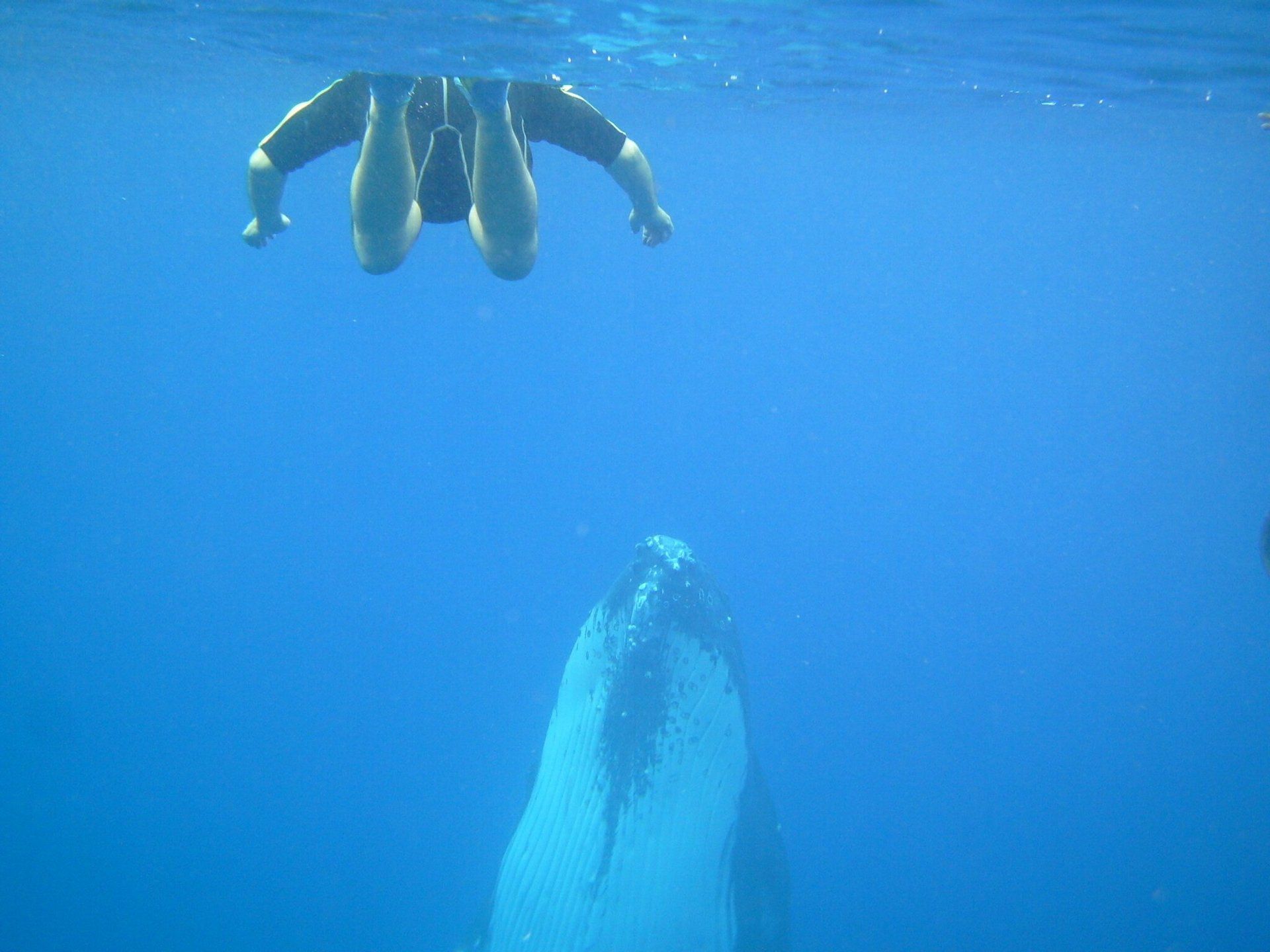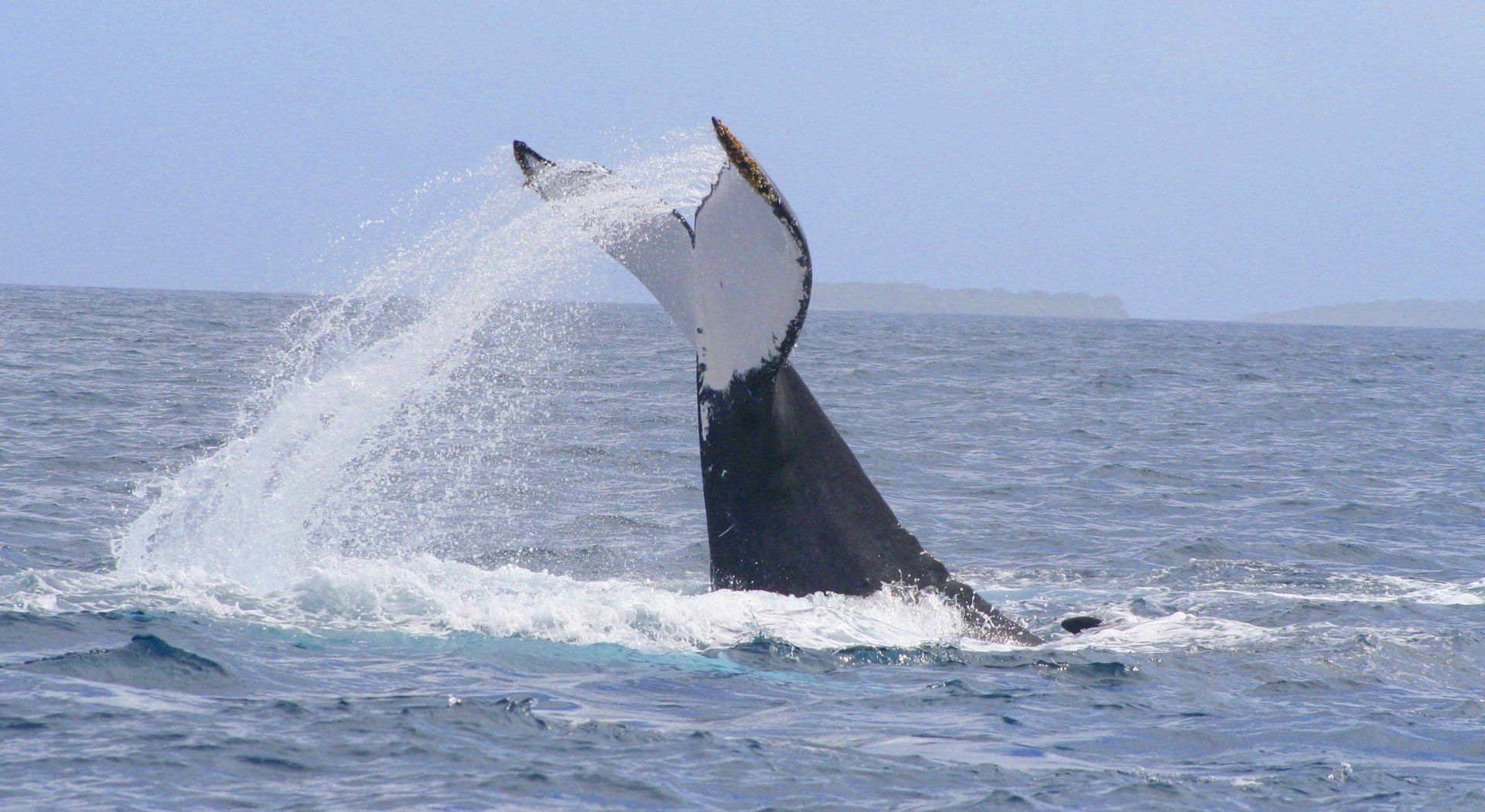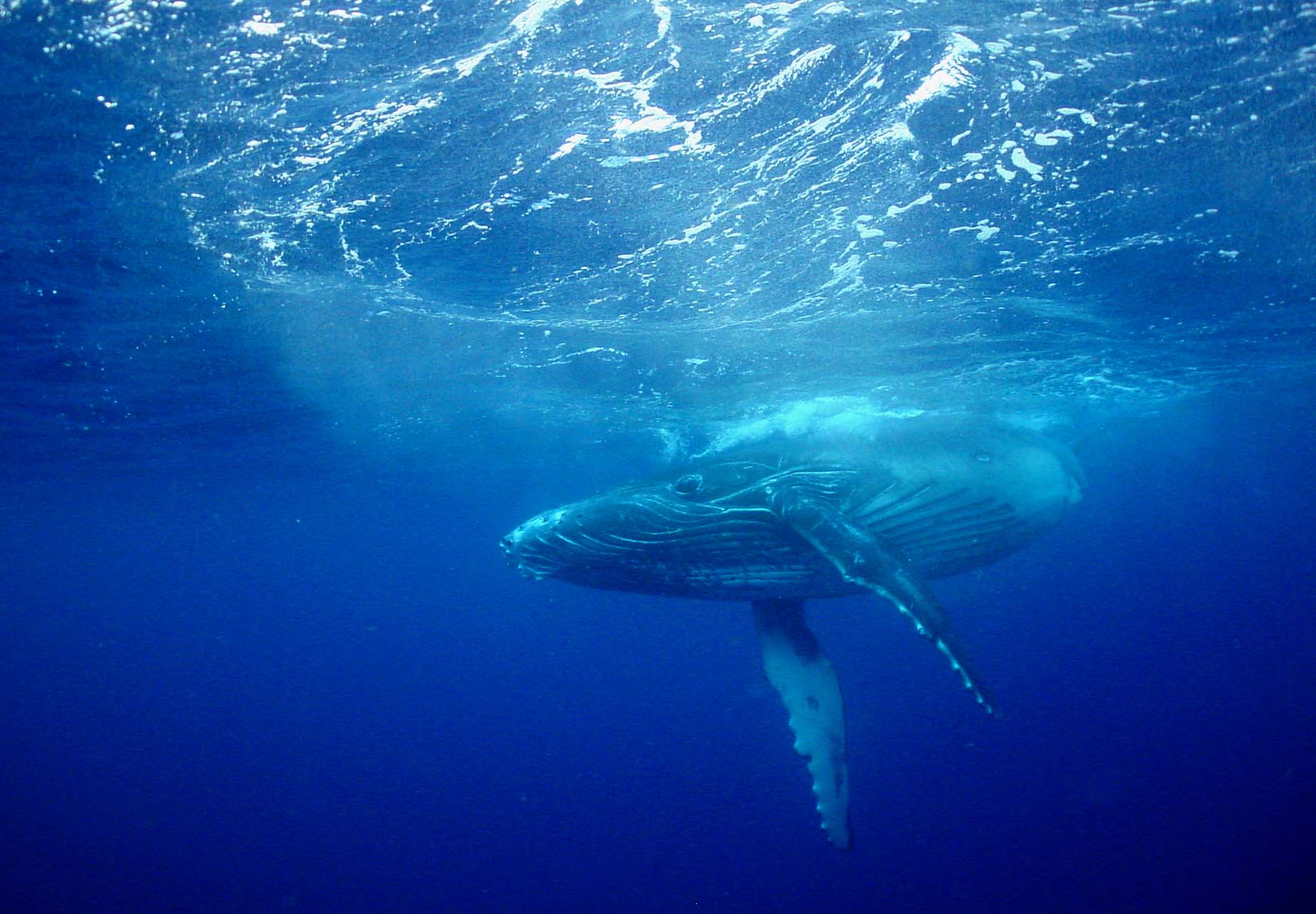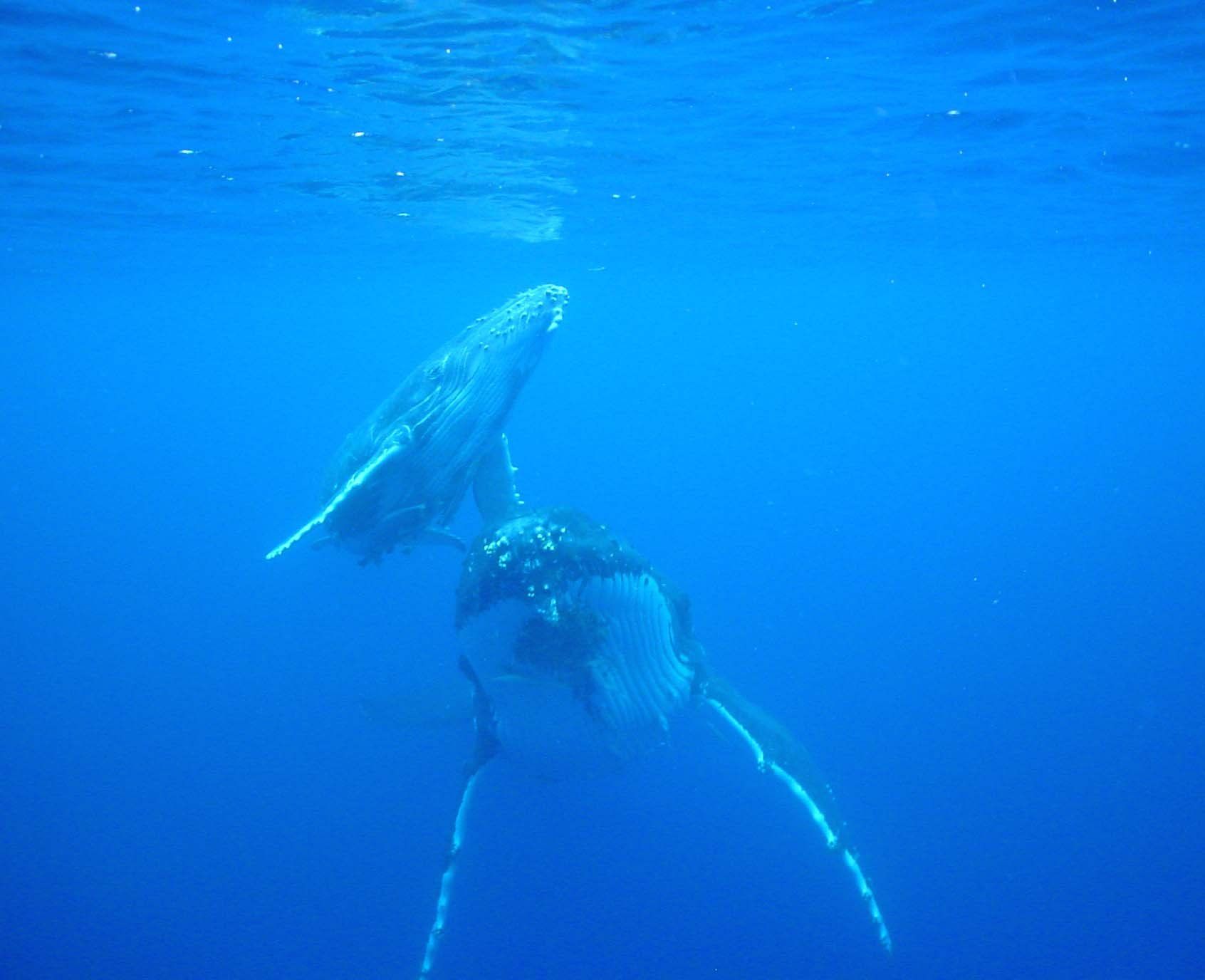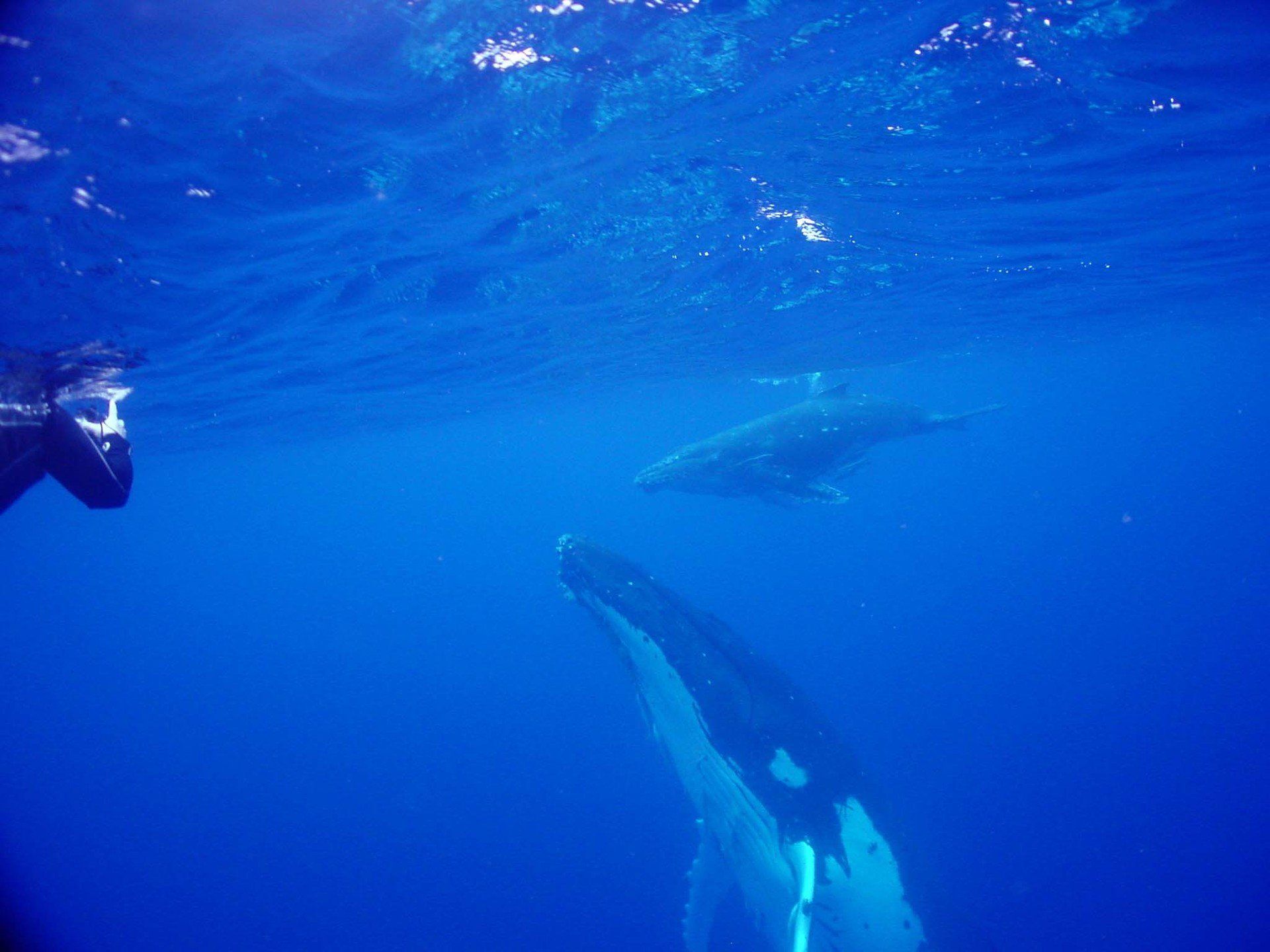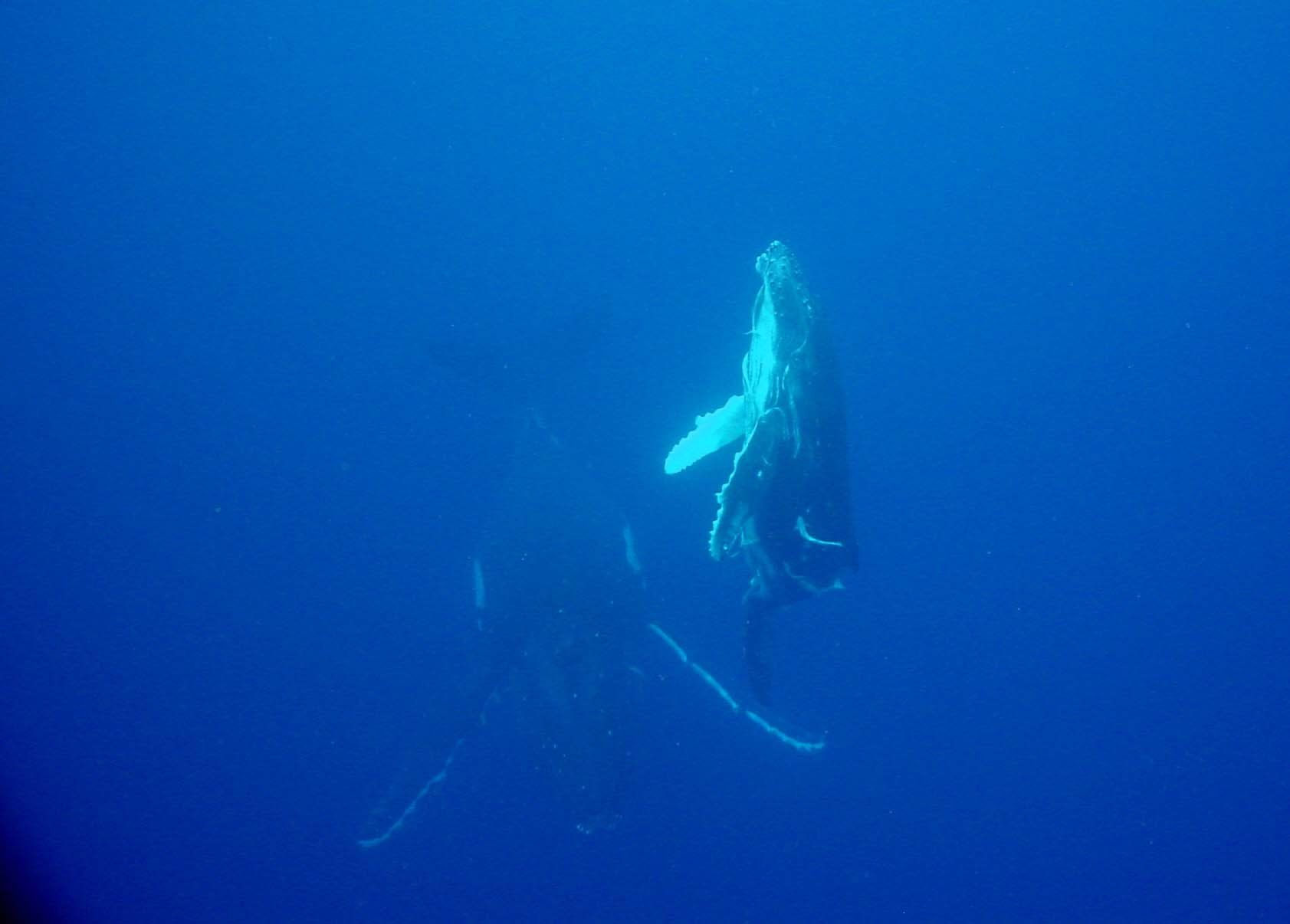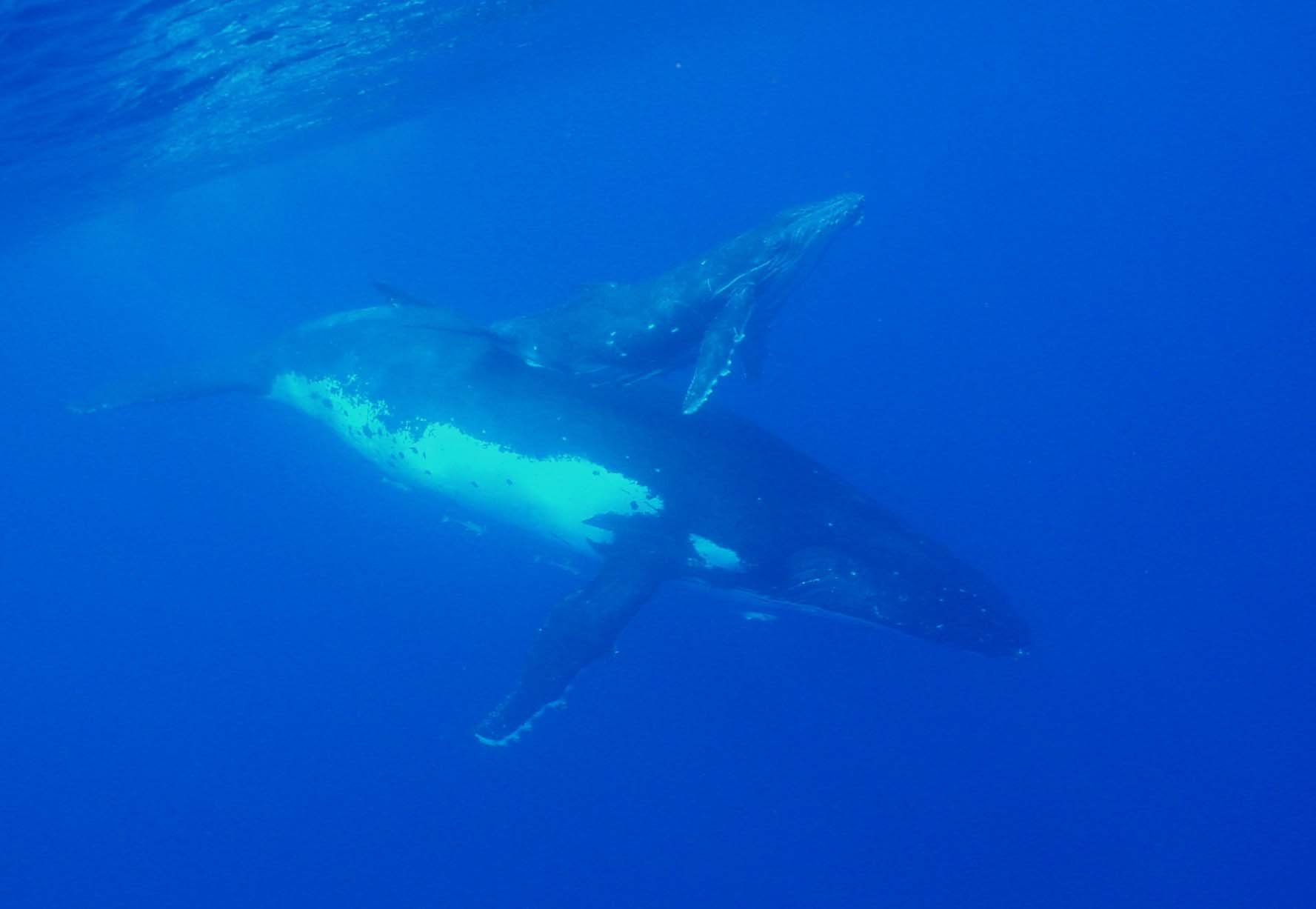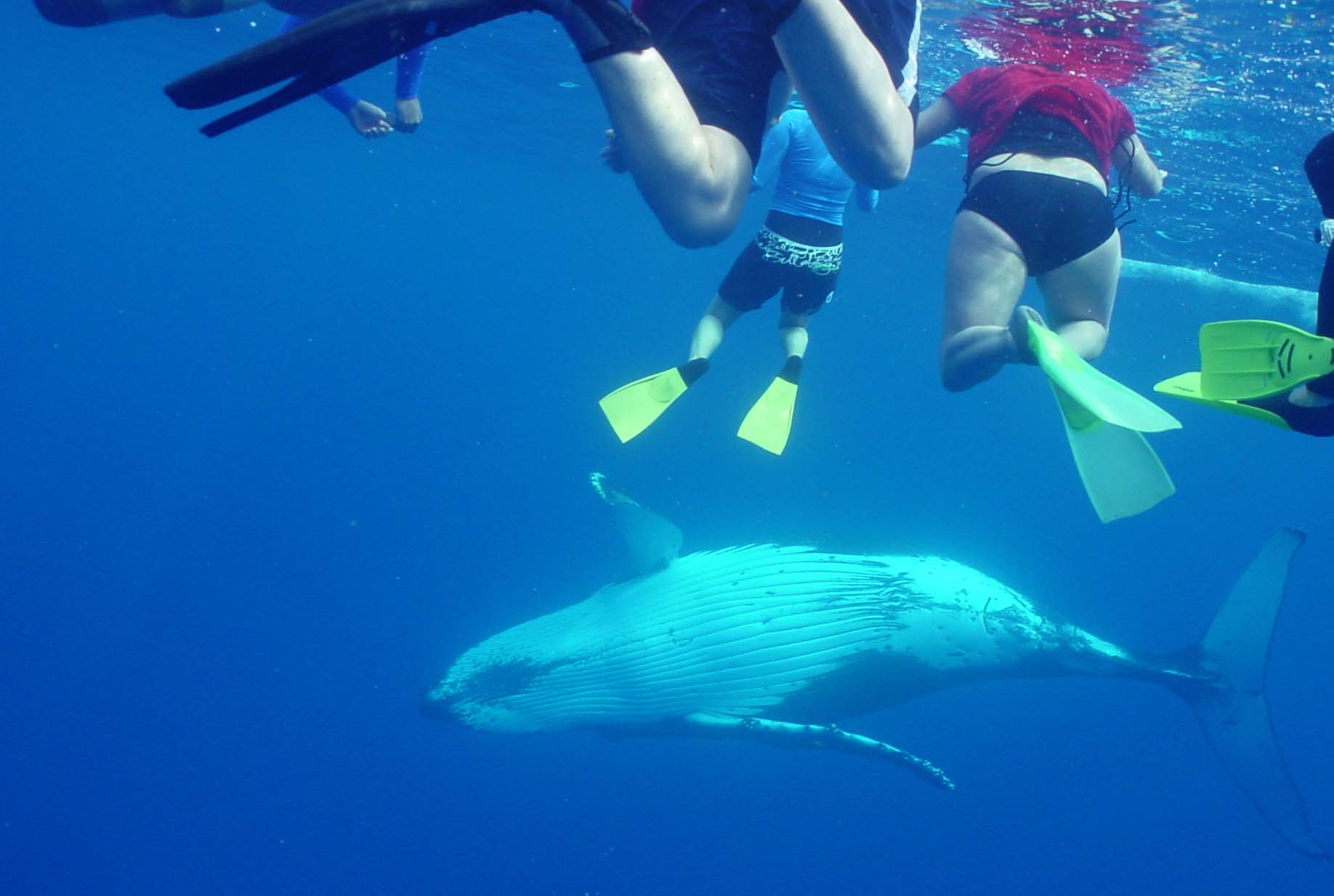2006
Swimming with Humpback Whales in Vava’u – Tonga
by Ron Hunter of Dive Forster at Fisherman’s Wharf
Early August saw the first of our five groups of divers and adventurers arrive in Vava’u in the Kingdom of Tonga. This was our fifth year in a row that we had travelled to the northernmost archipelago of the Tongan Islands. We first visited Vava’u in 2002 and experienced what must be the ultimate in-water adventure here. And we now keep returning to Vava’u each year, for it is here that we get the opportunity to Swim with the Humpback Whales.
The Whales of Tonga are southern hemisphere Humpback Whales, which annually migrate to the warm waters of Vava’u from the Antarctic. The myriad of islands and sheltered bays and inlets of Vava’u are an ideal safe location for the Whales to socialise, mate and give birth to their calves. These deep calm waters also afford us the perfect location to get up close to the biggest creatures you can ever interact with on our planet. Swimming with the Whales in Vava’u is the best thing I have ever experienced in the ocean.
Vava’u is the perfect Pacific Island destination for SCUBA divers and non-divers alike. There is so much to do in Vava’u, SCUBA diving, snorkelling, surfing, bareboat sailing or with a skipper, sea kayaking, adventure kart tours or just lying under a palm tree. This is a tropical paradise where you can choose to do as much or as little as you like. And it is one of only two places on Planet Ocean that you can Swim with Humpback Whales.
Our first group of adventurers to Vava’u in 2006 enjoyed spectacular tropical water diving at some of the great dive sites that Vava’u has to offer, “China Town”, “Fingers”, “Caddy Shack”, “Shark Tooth”, “Split Rock”, “Sea Fans”, “Rhino Horn”, “White Patch”, “Mermaid” and “Fotula” all became favourites and all were unique in their own way. Big caverns, swim throughs and pristine hard and soft corals were features of most of the sites.
On most of the dive sites we were treated to “whalesong”, the haunting call of the male Humpback Whales. The “whalesong” was our constant companion and at it’s most intense on the outer walls and drop-offs facing the vast expanse of the South Pacific Ocean.
The “whalesong” at times was so loud that it literally vibrated our bodies, at these times we would all be gazing out into “the blue”, knowing that the Whales were close by. On several occasions each previous year we have been fortunate enough to see the Whales swimming by whilst we have been SCUBA diving. And in 2006 we were treated to this special experience a number of times as well. On one occasion as we surfaced at the end of our dive at “Fotula” I saw and heard two massive blows as a couple of Humpbacks surfaced adjacent to us. We ducked back down to around five metres deep, and waited there a few moments until out of “the blue” these two leviathans swam slowly past us around ten metres away, their eyes curiously gazing at us, the strange puny bubble-blowing critters in their realm.
On many occasions the Humpback Whales of Vava’u display this curiousity when we are snorkelling near them. On one very memorable occasion we slowly, carefully and very quietly approached three Humpback Whales, a mother her calf and a male escort. They very carefully swam up to each group of five snorkellers as they in turn drifted above and near the Whales. The male escort was singing to the mum, and whilst we floated there mesmerised, the little male calf joined in the singing. This was a very emotional experience for all of us, but particularly for Kaye and Bruce Pringle from Victoria, whose six-year-old granddaughter Tara, accompanied by her dad Robert and mum Emma, snorkelled with these three Humpback Whales. Three generations of the Pringle family enjoying one of life’s greatest experiences, it just doesn’t get any better than that. For over two hours we snorkelled with these three Whales, each one of us feeling so privileged to have experienced such an adrenalin charged and emotional encounter.
On another occasion we came upon the most playful of calves, at around six weeks old he practised his swimming and manoeuvring skills around the groups of five snorkellers. Displaying a series of barrel rolls, reverse and forward somersaults he swam in around the groups. All the while his mum and her escort would be floating under us about fifteen to twenty metres below the ocean surface. The calf needing to take breath every seven minutes would choose to surface right next to his newfound playmates. Here he would play with us for around fifteen minutes at a time before swimming back down to his mum.
Mum and her escort would also surface every twenty-one minutes or so accompanied by the playful calf. The three Whales were very aware of our presence and took great care to not bump us as they surfaced each time. On one occasion we were floating motionless directly above the mum and escort and as I was just a little in front of the group, I did not notice the calf ascending, rocket-like, to surface less than a metre behind me. The first I knew about it was when I saw him right next to me, swimming slowly past and eyeballing me.
This calf gambolled with us for two hours, often so close that even with a very wide-angled lens, the photographers in our group were extremely lucky to get him entirely in frame. At times more than one boat will come upon a group of Whales and so as not to stress the Whales, only one boat at a time is allowed within 200 metres of them. The Whale Watch operators of Vava’u have a code of conduct whereby after two hours the stand-off boat has the right to replace the boat that is interacting with the Whales. We reluctantly left these three Whales still swimming circles around another boat as they took their turn with them.
On one very special day the weather was suitable for us to make the 2.5-hour open ocean crossing to the remote, uninhabited island of Toku. We arrived at the island around 9:45am and immediately an adolescent male Humpback swam up to the boat. Even as an adolescent of approximately four to five years of age he was a substantial critter, being over twelve metres long and weighing around thirty-five tonnes. We were woken out of our post trip lethargy by the Whale swimming circles around and under the boat. We hurriedly donned our masks and fins and five of us slipped into the water. The Whale swam straight up to us and proceeded to hone his swimming skills, passing by the group or straying individuals, oh so close. He would glide past with his pectoral fins tucked in beside his body and then barrel roll and glide past or under us with his pectoral fins stretched wide. He then swam up to each one of us now scattered a three to four metres apart across the ocean. Selecting his next plaything he approached each person head on, and then would duck under the stationary snorkeller before repeating this to the next one in their turn. He then swam under and around each on of us on his back, displaying his white belly whilst all the while eyeballing us.
We were totally enthralled by this Whale and his ability to swim so close and with so much care and skill that he never brushed or bumped one of us. Everyone was now totally adrenalin charged, screaming and cheering with our faces above the water, it was then that the Whale decided to join in and proceeded to “spy-hop”* next to each of us in turn and then swim over the ten metres or so to the boat and “spy-hop” there right next to the boat, to the delight of those who’s turn it was to be on the boat.
* The term “spy hop” refers to the behaviour that is unique to Humpback Whales of positioning themselves vertically in the water, with their nose, and at times their entire head and eyes above the ocean’s surface.
This inquisitive Whale played with his new found “friends” for over three hours before unhurriedly swimming away, in the end I think that we became just boring as we just floated there on the surface not interacting at all. I now wonder what his reaction would have been if I had emulated his barrel rolls and somersaults. Next year I might try this if the opportunity presents itself.
We were SCUBA diving one day, with just five divers on the boat and having completed our first dive at “Split Rock” we settled down to a cup of coffee during our surface interval. It was then that three whales swam right by the boat. Abandoning our morning coffee we grabbed masks, snorkels and fins and carefully slipped into the water. This mum would position her new calf on her nose and gently push her precious baby sideways through the water, proudly showing us her offspring. The male escort would swim beside and under the mum and at times intersperse himself between the mum and calf and our group of snorkellers. This was to go on for two hours before the Whales swam off. Not a bad way to spend your surface interval? I even managed to hide my disappointment with having to contend with a cold cup of coffee.
Not all of our time with the Whales was spent snorkelling with them. One day we came upon a mum and her calf and two amorous male escorts. Mum didn’t want have anything to do with these two boys and displayed her annoyance with their approaches by tail slapping them if they came too close. The noise from her powerful tail slaps resounded across the ocean’s surface. Observing her behaviour from the boat was not only the best for photography, but also the most prudent place to be located. At various stages the calf would try to emulate his mum and also began tail slapping her suitors. Great fun to watch just this!
Every year our encounters with the Whales of Vava’u, produces new, unique and mind-blowing experiences. Our encounters in 2006 followed this pattern, each encounter different, not necessarily better than another, just all totally absorbing, memorable and very emotional for all of us who enjoyed them.
